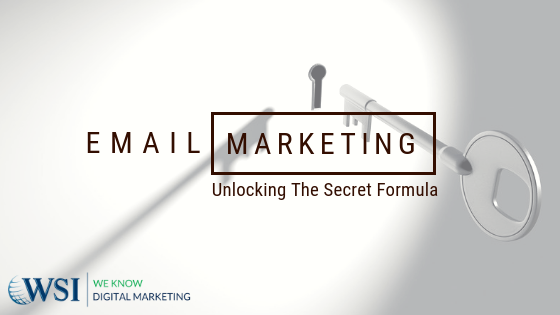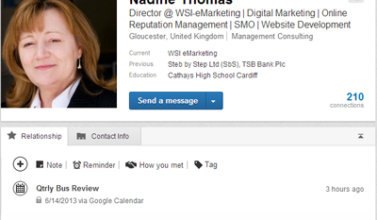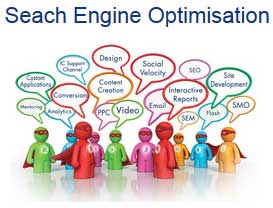
There is a reason why businesses still invest in email marketing as it is incredibly powerful when used correctly. With the right advice and implementation, email marketing offers exceptional flexibility so you can really tailor your strategy to reach specific segments of your target audience. The secret formula to email marketing success include a few simple steps to keep your subscribers happy and engaged.
-
Identify All Inactive Subscribers
Many brands define ‘inactive subscribers’ as leads who have not engaged with any of their email content in 6-12 months. This includes those who have not opened any emails, responded to messages or acted on any of the content they received.
Once you know who is inactive on your email list, you can start developing a strategy to re-engage with them. Subscribers often go inactive because they no longer check the email they first provided you with or their inbox is full so they don’t see or message.
In this instance, create a simple email marketing campaign to give these subscribers an opportunity to update their contact information. If they are loyal to your brand, they will more than likely provide you with their new contact information.
-
Ask Your Audience What They Want
Another great way to improve engagement is to ask your audience what type of content they want to receive. This helps build rapport with your brand and encourage engagement as they feel that their opinion matters.
There is nothing worse than being bombarded by tons of irrelevant emails. Inboxes get cluttered and people will unsubscribe and even worse, mark your messages as Spam. When you give your audience options, they are more likely willing to subscribe and engage in future.
On initial sign-up or as a follow-up campaign, ask your subscribers a selection of questions such as:
- Would you like to receive updates from us?
- How often would you like to receive updates? Weekly or Monthly?
- What specific topics are you interested in? Mobile Marketing? Social Media? Marketing Automation? Web Design and Technology?
- What type of content interests you the most? Text? Blogs? Video? Infographics?
-
Create Interesting And Relevant Content
It is vital to know your target audience and the only way to do this is through research and buyer personas. Read this article for more information on ‘Tips for Creating Buyer Personas’.
Along the same vein as our previous point, knowing what content to produce directly relates to answers to specific questions. Collect data whenever you can but keep the customer in mind at all times. Providing email content that drives intent increases the likelihood that subscribers will take action like sharing or even making a purchase. Sharing information-rich content will help establish credibility within your niche. This will result in your audience seeing you as a valuable resource or an expert in your field.
Providing a clear message is of the utmost importance in email marketing. Remember, most people won’t spend longer than 5 seconds looking at your email grab their attention immediately. Create catchy subject lines, titles and easy formats. Use headings and paragraphs and ALT tags for images as some email clients don’t show images by default.
-
Market Segmentation And Email Marketing
Market segmentation is the process of dividing a broad consumer or business market into sub-groups of consumers or segments. Segmentation is based on some type of shared characteristic of existing and potential customers. We always recommend following SMART goals which are more effective at providing the necessary clarity, focus and motivation to achieve your goals.
An added benefit of email marketing is the fact that you easily segment your audience list. You can create personalised, innovative and effective campaigns that will appeal to the various types of subscribers.
Creating more personalised messages will make your subscribers feel as if the content was specially curated for them. Personalisation and segmentation can lead to a noticeable improvement in engagement. Directly linked to Personas, segmenting your marketing is only possible if you collect as much information as possible. Just as “content is king”, “knowledge is power”! If you have collected all the necessary information, you can really start benefiting from email marketing.
-
Don’t Be Afraid To Ask For Feedback
Feedback is probably one of the most important aspects of running any form of business. If you don’t ask, you will never know and this applies in the B2B and B2C sectors. If your email list has become more inactive, do some research and identify possible reasons. One of the most effective ways of doing this is going directly to your subscribers.
Compile a detailed survey to find out what your audience thinks about your brand. Surveys can really help identify things you are doing well and what you need to improve on. Depending on your survey questions and what your brand has to offer, your audience might love the content they receive but not the frequency thereof. Other examples include prospects preferring educational emails and not so much the marketing or sales messages.
While there are many useful resources online about conducting surveys, these questions will help you get started:
- Why did you subscribe to our mailing list?
- What were your expectations when you subscribed?
- Were these expectations met? Please provide short, detailed reason(s) why/why not?
- Which of the following types of emails do you prefer? (List the types of emails you send)
- Of the following list, which emails are you least interested in? (List the types of emails you send)
- What can we do to improve our email communication?
Who doesn’t like a freebie or a special offer? This is something you must consider when asking your audience to participate in a survey. In other words, give them an incentive for answering your questions. This generally results in more participants and a more accurate overview of how your target audience perceives your brand. This will greatly depend on your service offering but some examples include a discount voucher, buy-one-get-one-free coupon, a free webinar or even a gift card.
-
Identify When And How Often To Send Emails
The secret it to find the right balance between the number of emails you send, when you send them and how often. There are many varying opinions in terms of when, and how often, to send emails. For the most part, this directly relates to engagement and conversion rates.
Marketers know that there is no magic day, time or frequency and that it all comes down to the brand offering and performing AB Testing. Never copy your competitors but you can certainly learn from them. See how often they send emails and set up your email marketing strategy accordingly. Every email you send should always have a purpose. Ask yourself whether the email is about promoting a product, improving brand awareness or subscribing via a form fill out.
Seasonal items such as Christmas trees or gift wrapping services have it slightly easier. These businesses can increase email frequency in the months leading up to Christmas or another festive event like Valentine’s Day, Easter and Halloween among others.
-
Add A Clear, Strong Call To Action (CTA)
Besides content, a major difference between good and great emails is a clear and strong CTA. While some say one CTA is enough, it will depend on the content and the message you want to get across. If you’re promoting a free webinar or e-book, you’d want all the focus on the offer without distracting readers with too much additional information.
Include a strong CTA as close to the beginning as possible and repeat the CTA toward the end. Make sure the message is clear and that your readers know what you want them to do. If you don’t, they will most likely not click on anything and you will have lost the potential business. Good email CTAs should be short and sweet but still pack a punch. You want your readers to see the email and make them feel as if they can’t help but click the link.
In conclusion, AB Testing is highly recommended with CTAs, subject lines and even email content. Create at least two different versions of the same email and send it to a random sample list of your audience. From there, you can analyse each element in both versions and determine which one performed best. It’s important to change your approach when something isn’t working and AB Testing is perfect for this.
If you need help getting started with your email marketing campaign, get in touch for a free consultation. We specialise in digital marketing, social media management and Marketing Automation among others. Please share your thoughts in the section below or find us on social media. We’d love to hear from you!
Related Post
Content Sharing Via Social...
Target marketing to meet your business goals Is your business using social media channels...
- June 15, 2011
- By Nadine Thomas
- Digital Marketing
Can you get help to fund your...
If you need a new website, it’s possible that you could get help towards the cost....
- May 30, 2013
- By Rob Thomas
- Digital Marketing
10 Best Ways to take...
Others may have seen a pop-up ‘invitation to upgrade’ message when they accessed...
- June 1, 2013
- By Rob Thomas
- Digital Marketing
Google Hangouts – 6 Ways...
Google+ was launched just 2 years ago in June 2011. In the first 6 months of its...
- June 24, 2013
- By Nadine Thomas
- Digital Marketing
6 top tips on how to get the...
In Europe alone there are 243.2 million Facebook subscribers (internetworldstats, 2012)....
- July 3, 2013
- By Nadine Thomas
- Digital Marketing
What is SEO?
SEO or Search Engine Optimisation to give it its full name is the process that helps your...
- July 29, 2013
- By Nadine Thomas
- Digital Marketing











Leave a Comments